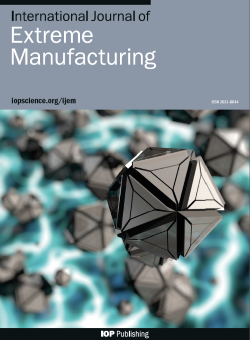以性能控制为导向的混合金属增材制造技术:技术现状、挑战和未来趋势
IF 16.1
1区 工程技术
Q1 ENGINEERING, MANUFACTURING
引用次数: 0
摘要
金属增材制造(AM)技术自 20 世纪 70 年代发明以来,已在基础理论领域取得了重大进展。然而,连续加工过程中的性能不稳定性,如热历史、残余应力累积和柱状晶粒外延生长,始终阻碍着其在标准化工业生产中的广泛应用。为了克服这些挑战,以性能控制为导向的混合 AM(HAM)技术应运而生。这些技术利用外部辅助工艺,旨在调节金属 AM 过程中的微结构演变和机械性能。在此背景下,用于调节熔池和凝固材料变形的 HAM 技术分别被确定为能量场辅助 AM(EFed AM,如超声波、电磁、热等)技术和层间塑性变形辅助 AM(IPDed AM,如激光冲击强化、轧制、超声波强化、摩擦搅拌工艺等)技术。然后,对以性能控制为导向的 HAM 技术进行了详细、系统的综述。该综述涵盖了外部能量场对材料熔化、流动和凝固行为的影响,以及层间塑性变形对晶粒细化、成核和再结晶的调节作用。此外,还全面回顾和讨论了以性能控制为导向的 HAM 技术在管理残余应力转换、冶金缺陷封闭、机械性能改善和各向异性调节方面的作用。综述最后分析了 EFed AM 和 IPDed AM 技术的未来发展趋势。本文章由计算机程序翻译,如有差异,请以英文原文为准。
Performance-control orientated hybrid metal additive manufacturing technologies: State of the art, challenges, and future trends
Metal additive manufacturing (AM) technologies have made significant progress in the basic theoretical field since their invention in the 1970s. However, performance instability during continuous processing, such as thermal history, residual stress accumulation, and columnar grain epitaxial growth, consistently hinders their broad application in standardized industrial production. To overcome these challenges, performance-control-oriented hybrid AM (HAM) technologies have been introduced. These technologies, by leveraging external auxiliary processes, aim to regulate microstructural evolution and mechanical properties during metal AM. In this context, HAM technologies for molten pool regulation and solidified material deformation are identified as energy field-assisted AM (EFed AM, e.g., ultrasonic, electromagnetic, heat, etc.) technologies and interlayer plastic deformation-assisted AM (IPDed AM, e.g., laser shock peening, rolling, ultrasonic peening, friction stir process, etc.) technologies, respectively. A detailed and systematic review of performance-control-oriented HAM technologies is then provided. This review covers the influence of external energy fields on the melting, flow, and solidification behavior of materials, and the regulatory effects of interlayer plastic deformation on grain refinement, nucleation, and recrystallization. Furthermore, the role of performance-control-oriented HAM technologies in managing residual stress conversion, metallurgical defect closure, mechanical property improvement, and anisotropy regulation is thoroughly reviewed and discussed. The review concludes with an analysis of future development trends in EFed AM and IPDed AM technologies.
求助全文
通过发布文献求助,成功后即可免费获取论文全文。
去求助
来源期刊

International Journal of Extreme Manufacturing
Engineering-Industrial and Manufacturing Engineering
CiteScore
17.70
自引率
6.10%
发文量
83
审稿时长
12 weeks
期刊介绍:
The International Journal of Extreme Manufacturing (IJEM) focuses on publishing original articles and reviews related to the science and technology of manufacturing functional devices and systems with extreme dimensions and/or extreme functionalities. The journal covers a wide range of topics, from fundamental science to cutting-edge technologies that push the boundaries of currently known theories, methods, scales, environments, and performance. Extreme manufacturing encompasses various aspects such as manufacturing with extremely high energy density, ultrahigh precision, extremely small spatial and temporal scales, extremely intensive fields, and giant systems with extreme complexity and several factors. It encompasses multiple disciplines, including machinery, materials, optics, physics, chemistry, mechanics, and mathematics. The journal is interested in theories, processes, metrology, characterization, equipment, conditions, and system integration in extreme manufacturing. Additionally, it covers materials, structures, and devices with extreme functionalities.
 求助内容:
求助内容: 应助结果提醒方式:
应助结果提醒方式:


